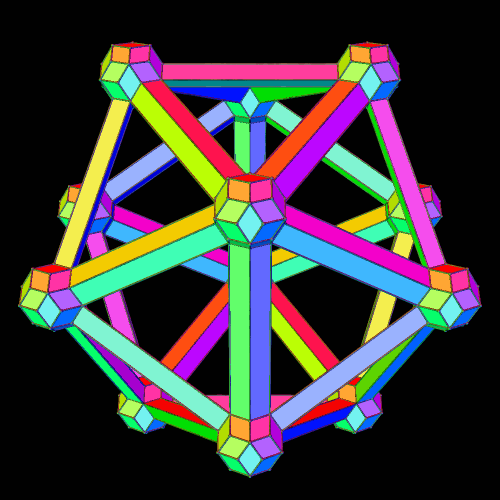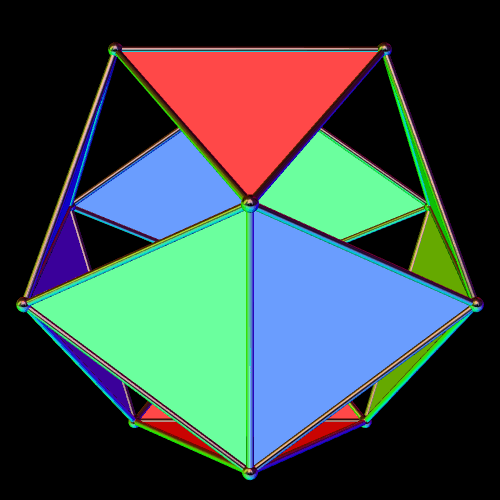I made these two versions of the icosahedron, using rhombic triacontahedra and elongated prisms, and a program called Stella 4d. You can try this program yourself, for free, at http://www.software3d.com/Stella.php.
Tag Archives: icosahedron
The Pyritohedral Golden Icosahedron
Both the Platonic icosahedron and the golden icosahedron have twenty triangular faces. In the Platonic version, these faces are all equilateral triangles. The golden icosahedron has eight such triangles, but the other twelve are golden triangles, which have a leg-to-base ratio which is the golden ratio. These golden triangles appear in pairs, and the six pairs are arranged in such a way as to make this a solid with pyritohedral symmetry: the symmetry of a standard volleyball.
A net for the golden icosahedron appears below. Both images were made using a program called Stella 4d, which you can try for free right here.
Twelve Triangles of the Icosahedron
Icosahedra have twenty faces. In the image above, only twelve of those triangles are visible; the other eight have been hidden, so you can see what this solid looks like on the inside. The twelve which remain have pyritohedral symmetry — the symmetry of a volleyball.
I made this using Stella 4d, which you can try for free at http://www.software3d.com/Stella.php.
A Toroidal Rhombic Dodecahedron, Made of Icosahedra



I made these using Stella 4d: Polyhedron Navigator, which you can try for free at http://www.software3d.com/Stella.php.
Spectral Icosahedra
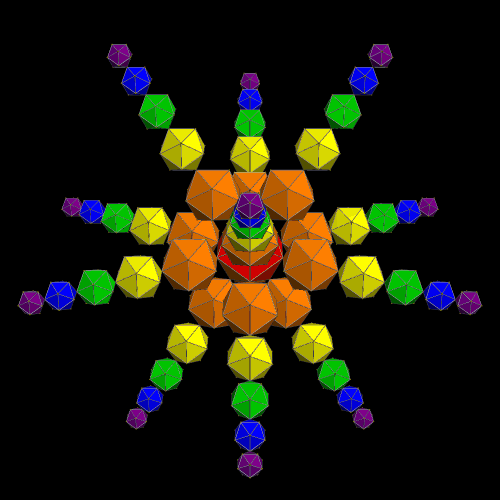
Stella 4d: Polyhedron Navigator has a “put models on vertices” function which I used to build this cluster of 61 icosahedra. If you’d like to try this software for yourself, there is a free trial download available at http://www.software3d.com/Stella.php.
An Embellished Icosahedron

Created using Stella 4d, which you can try for free at http://www.software3d.com/Stella.php.
A Blend of the Icosahedron and the Rhombic Enneacontahedron
This is the icosahedron, one of the Platonic solids. It has twenty faces.

The polyhedron below is the rhombic enneacontahedron, a well-known zonohedron with ninety faces.
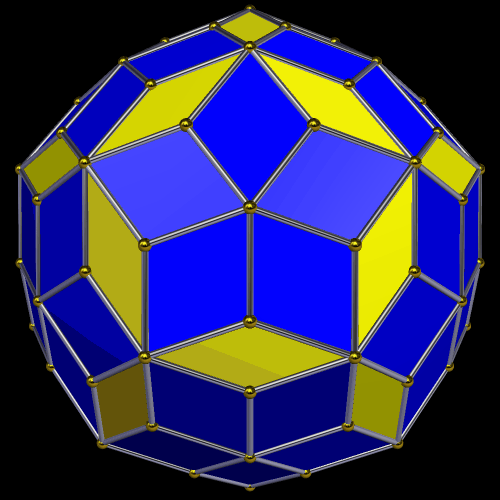
Finally, here is a polyhedron which blends these two. It has 20 + 90 = 110 faces.

I used Stella 4d: Polyhedron Navigator to make these images. You can try this program for free at http://www.software3d.com/Stella.php.
This Faceting of the Truncated Icosahedron is Also a Truncation of the Great Dodecahedron
This first version shows this polyhedron colored by face type.

In the next image, only parallel faces share a color. This is the traditional coloring-scheme for the great dodecahedron.

Both images were created with Stella 4d, which is available as a free trial download at this website. Also, the obvious change needed with this polyhedron — making its faces regular — is in the next post.
Three Views of the Final Stellation of the Icosahedron
In this first image of the final stellation of the icosahedron, the faces are colored with a different color for each face, except for parallel faces, which are the same color.
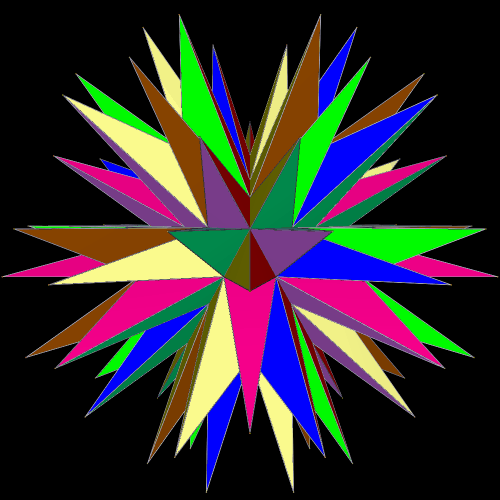
The next image uses red and yellow to color the facelets by type.

Finally, the third image simply uses rainbow color mode.

I used Stella 4d to make these. You can try this program for free at this website.
A Great Dodecahedron, Inscribed Inside a Partially-Invisible Icosahedron

I made this using Stella 4d, which you can try for free at this website.

